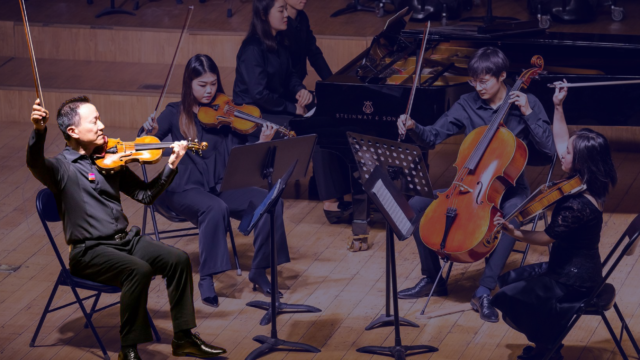Overview | Diversity in the Orchestra Field 2023
Our research reveals crucial differences between the experiences of different racial/ethnic and gender groups. Inequities persist in overall representation, and also between orchestra roles and budget categories.
From low starting points, some relative progress was made during the period from the 2013-14 season to the 2022-23 season. Specifically, representation improved among Asian or Asian American and women conductors, Black or African American staff and board members, Hispanic/Latinx and Multiracial top executives, and women top executives in larger budget orchestras.
Putting this relative progress into context, however, it becomes clear that certain historically and continuously marginalized groups remain much less well represented in the orchestra field than in the overall U.S. population. Specifically, the proportion of Black or African American, Hispanic/Latinx, and American Indian and Alaska Native people remains significantly lower in every orchestra role than in the U.S. population, as does the proportion of women and nonbinary people working in conductor and music director roles.
In addition, breaking down the findings by budget category reveals that women’s representation in all orchestra roles is focused within smaller-to-medium budget orchestras, as is the representation of Black or African American, Hispanic/Latinx, and Multiracial musicians.
In some categories, little or no progress has been made since the 2013-14 season or earlier. Specifically, Black or African American musician representation has improved only very slightly since data collection began in 2010. In addition, Black or African American and Multiracial music director representation decreased between 2013-14 and 2022-23. The proportion of women music directors working in larger budget orchestras also decreased during this decade. And the growth of Asian or Asian American among staff members halted during the pandemic years, as the representation of other BIPOC (Black, Indigenous, and People of Color) groups increased.
While recognizing that representation does not imply equivalence in voice, power, or influence,1 we note that — in certain roles — particular groups remain at least as strongly represented as in the U.S. population. This finding applies specifically to Asian or Asian American people in all artistic roles; Multiracial people in all roles except for staff and board members; Native Hawaiian and Other Pacific Islander in all roles apart from top executives; and women staff members.
Our recommendations indicate where orchestras should seek to reverse declines and accelerate slow progress. In doing so, they provide an evidence-based framework for the future work of the orchestra field.
Footnotes:
Jump to another page:
- Introduction
- Overview
- Key Findings
- Recommendations
- Definitions
- Technical Notes
- Detailed Analysis 1: By Orchestra Role (see full PDF)
- Detailed Analysis 2: By Demographic Group (see full PDF)
- Detailed Analysis 3: By Role and Budget Size (see full PDF)
- Detailed Analysis 4: Focus on the Pandemic Years (see full PDF)
- Appendix 1: Methodology
- Appendix 2: Stories of Progress in Orchestras
- Appendix 3: References
- Acknowledgements
This project was supported in part by an award from the Research Grants in the Arts program at the National Endowment for the Arts, Grant #1863433-38-20. Additional funding was provided by a generous grant from the Mellon Foundation, and by public funds from the New York City Department of Cultural Affairs in partnership with the City Council.
Related
-
Learn | Audience Engagement
Taking Another Listen: Engaging New Audience Members of Color
-
Learn | Executive Leadership & Management
Conference 2024: Opening Session and Gold Baton Award
-
Learn | Equity, Diversity & Inclusion
Conference 2024: Analyzing Orchestra Business Models for Strategic Decision-Making
Become a member
Thank you for your interest in the League of American Orchestras! We are dedicated to advancing the orchestral experience for all.
Join Now




